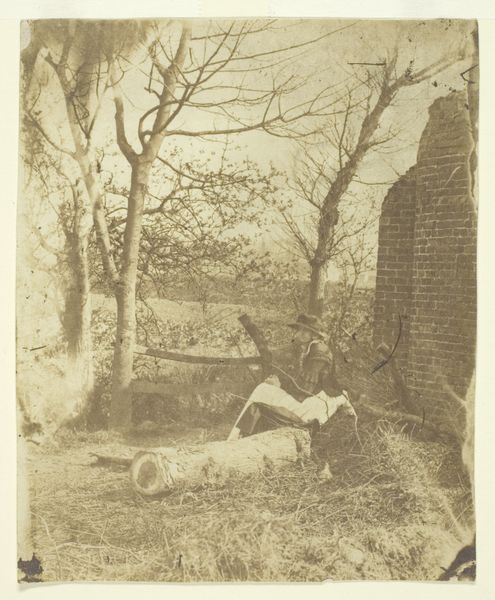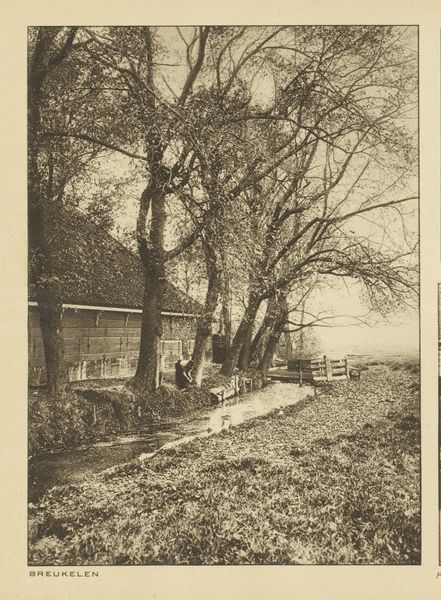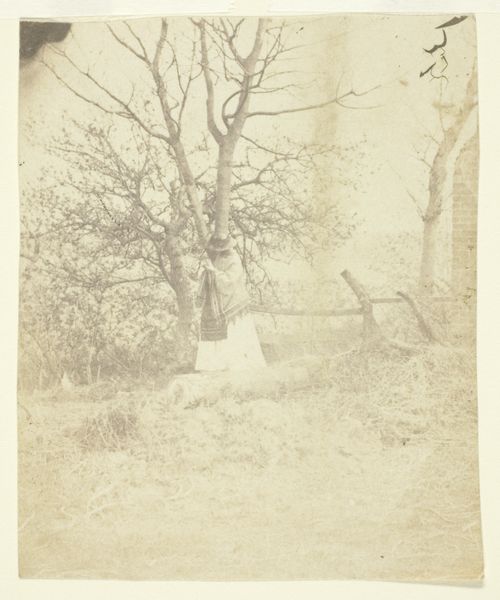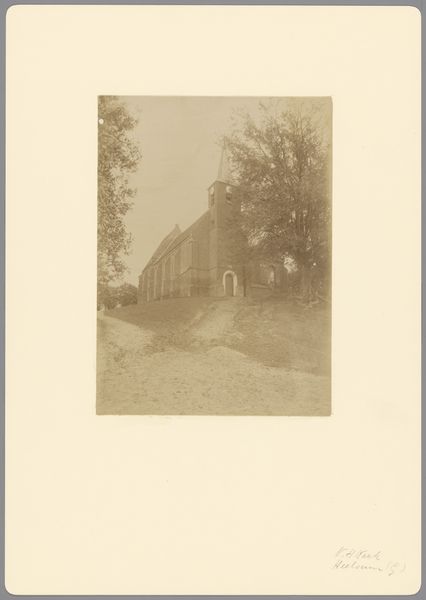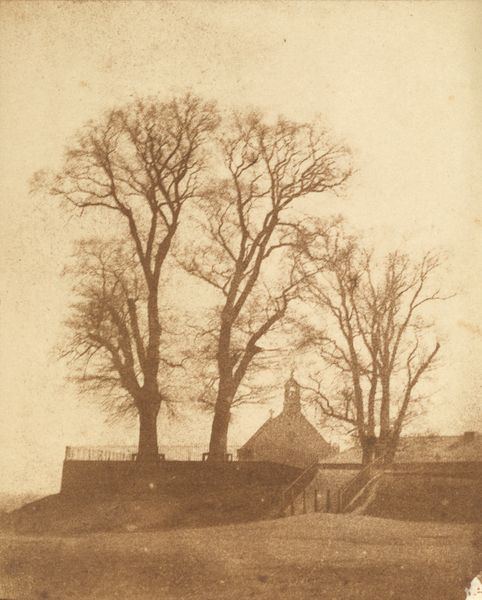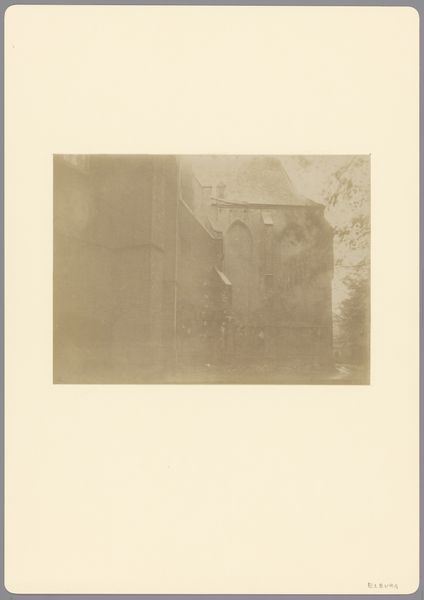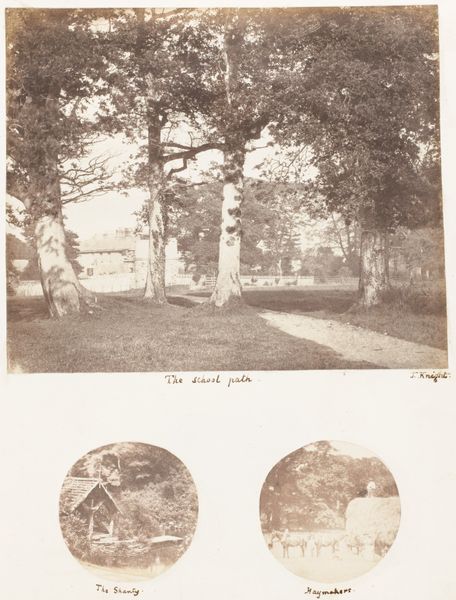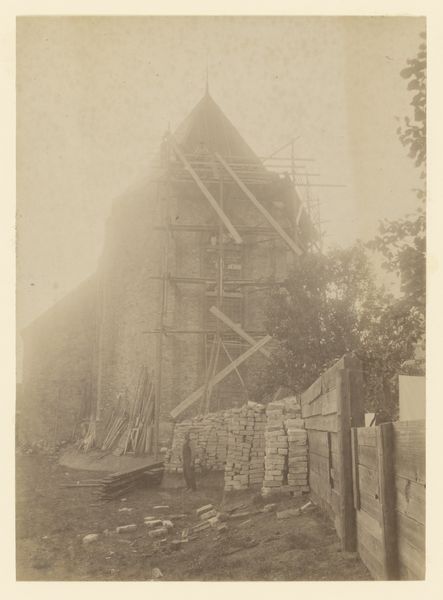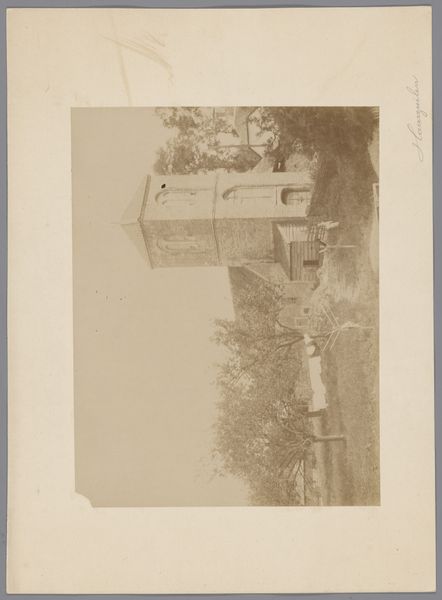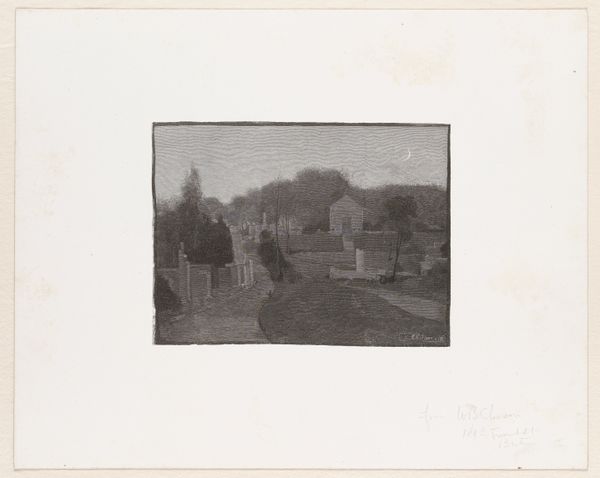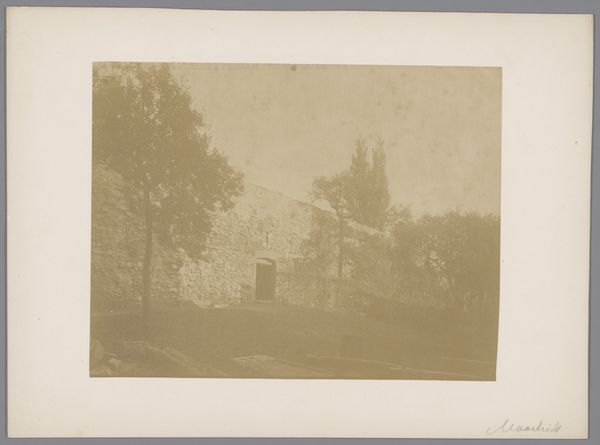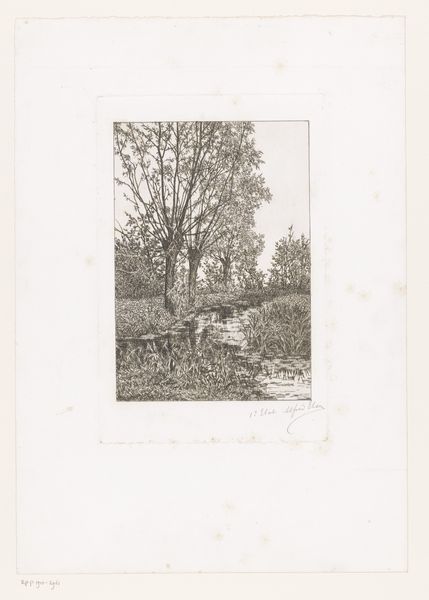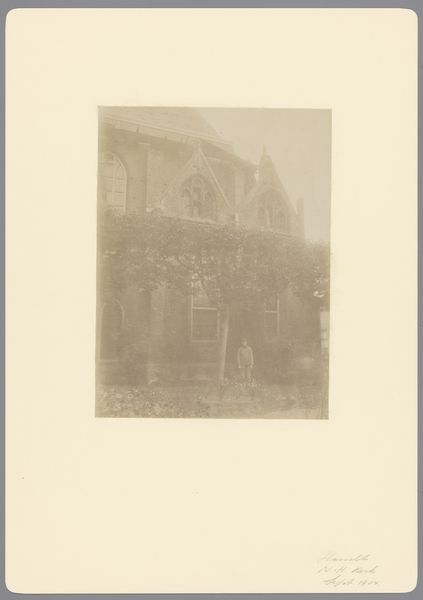
Dimensions: 11 × 9.1 cm (image/paper)
Copyright: Public Domain
Curator: Mrs. Craik Seated Outdoors, a paper print made sometime in the 1850s. The artistry lies, in part, with the unknown hands who meticulously created the final print. Editor: It possesses such quiet stillness. There’s almost a melancholy feeling in the woman’s posture as she's captured within this rather bleak, late Romantic scene. I want to know her story! Curator: Consider how the composition isolates her, a lone figure blending into the muted landscape. Early photography, often viewed as straightforward documentation, also operated under various material and labor constraints. This method was complex. Editor: Yes, the formal aspects definitely enhance this sense of solitude. But the photograph also sparks thoughts about the social context for women at this time. Is she constrained or finding freedom within the natural world, within domesticity? Curator: We see the textures and subtle shifts of light achieved with this technology. Look closely at the brick and tree branches. How did this photographer approach their studio and the manipulation of materials at their disposal? Editor: This connects to notions of class and leisure, who had access to these outdoor spaces, and who was allowed the time to be contemplative and engage with the natural world in this way. Curator: It’s tempting to imagine their photographic process as involving a team of artisans and technical workers. How many hands touched this object before it came to rest in our museum collections? Editor: A powerful snapshot in time, opening questions about women's position in society and challenging norms around labor and landscape in a fascinating intersection of technique, social space, and identity. Curator: Precisely, an engagement with materiality reveals that its creation and preservation required far more communal labor than we initially imagine, blurring that distinction between art and craft. Editor: So even through the melancholic atmosphere and the specific technical construction, we begin to see reflections of both personal sentiment and broader societal dynamics in the Romantic era.
Comments
No comments
Be the first to comment and join the conversation on the ultimate creative platform.
